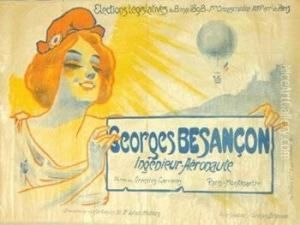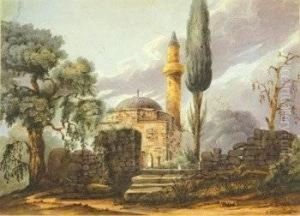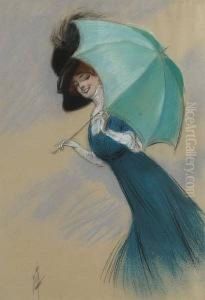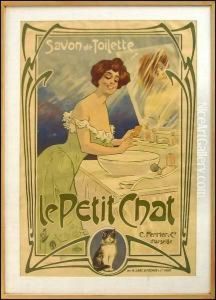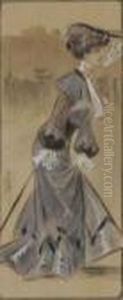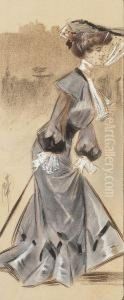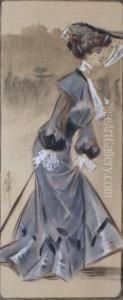Ferdinand Mifliez Misti Paintings
Ferdinand Mifliez, commonly known by his pseudonym Misti, was a French artist and illustrator born in 1865. Not as widely known as some of his contemporaries, Misti made a significant contribution to the Belle Époque period's art scene in France. His work is characterized by its depiction of Parisian life, its vibrant use of color, and its contribution to the aesthetics of poster art during the late 19th and early 20th centuries.
Misti's career was influenced by the broader artistic movements of his time, including Impressionism and Art Nouveau. Although there is limited biographical information available about Misti, it is known that he was active in Paris during a time when the city was a thriving center for the arts. He worked during the heyday of the poster as an art form, a period that also saw the work of other great artists such as Henri de Toulouse-Lautrec, Jules Chéret, and Alphonse Mucha.
He specialized in lithography and was recognized for his posters advertising products, exhibitions, and cultural events. His style incorporated a mix of bold lettering with more delicate and whimsical imagery, often featuring elegantly dressed figures, a reflection of the era's fascination with fashion and style. Misti's posters were not only advertisements but also became collectible items, appreciated for their artistic quality as much as for their commercial function.
Despite his artistic output, Misti's life and career were relatively short. He died in 1923, leaving behind a body of work that provides a window into the vibrant urban culture of Paris at the turn of the century. Misti's contribution to the art of posters has been recognized posthumously, with his original prints now being sought after by collectors and enthusiasts of the period's graphic arts.
